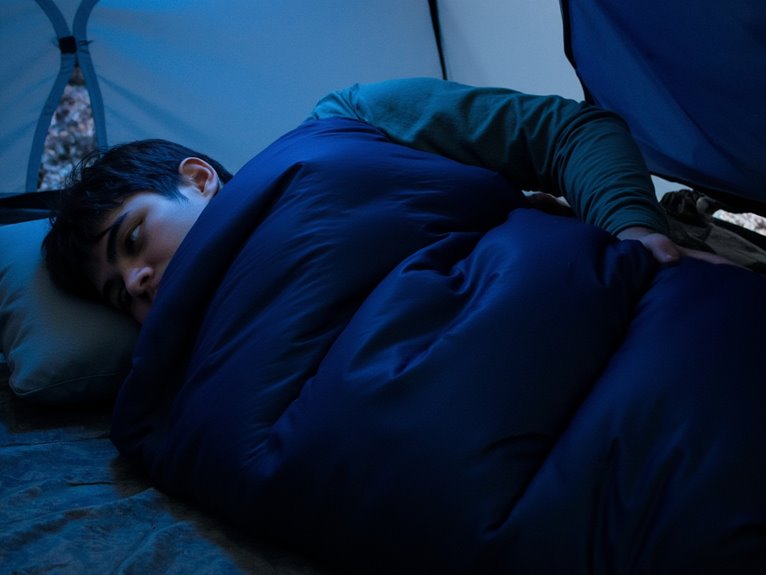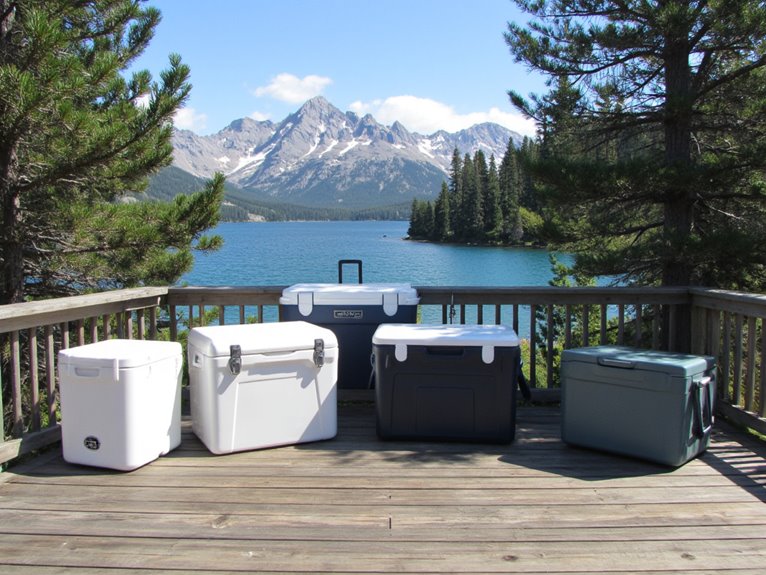How Hard Is It to Roll a Kayak?
Mastering the kayak roll requires a harmonious blend of physical strength, flexibility, and technique, making it a challenging but achievable skill for those willing to dedicate time and practice to its development. The roll involves a rotational movement around the longitudinal axis, demanding a precise balance of power and control. Kayak design, body positioning, and water conditions also play a significant role in determining success. With consistent practice, patience, and a focus on building strength and endurance, kayakers can develop the necessary skills to confidently roll their kayak. As you delve into the nuances of the roll, you'll uncover the intricacies that make this skill so rewarding.
We are supported by our audience. When you purchase through links on our site, we may earn an affiliate commission, at no extra cost for you. Learn more. Last update on 7th January 2026 / Images from Amazon Product Advertising API.
Understanding the Roll
Every successful kayak roll begins with a fundamental understanding of the underlying physics and biomechanics that govern this complex movement.
The kayak roll is basically a rotational movement around the longitudinal axis, requiring a harmonious blend of strength, flexibility, and technique.
As the paddler initiates the roll, they must generate torque by rotating their torso and applying force to the paddle.
This torque is then transmitted to the kayak, causing it to rotate around its axis.
A vital understanding of these fundamental principles is necessary for developing effective rolling techniques, as it enables paddlers to optimize their body positioning, paddle placement, and power application to achieve a smooth, efficient roll.
Kayak Design and Rollability
In terms of rolling a kayak, the design of the kayak itself plays a vital role in determining success.
The shape of the hull, the design of the chine, and the size of the cockpit all have a significant impact on a kayak's rollability.
Hull Shape Matters
The shape of a kayak's hull plays a crucial role in determining its rollability, as a well-designed hull can facilitate a smoother and more efficient roll. A hull with a rounded or 'V' shape can help to initiate the roll, while a flat or angular hull can make it more difficult.
A key consideration for hull shape and rollability is that a narrower hull tends to be more roll-friendly, as it allows for a more efficient transfer of energy from the paddler to the water.
A hull with a pronounced 'shoulder' or curvature can help to guide the kayak back upright during a roll.
A smooth, continuous hull shape can reduce drag and make it easier to initiate and complete a roll.
Chine Design Affects Roll
A kayak's chine design, referring to the angle and shape of the hull's lower edge, substantially influences its rollability, as a well-designed chine can facilitate a smoother and more controlled roll.
A rounded chine allows the kayak to pivot effortlessly, reducing the effort required to initiate and maintain a roll.
Conversely, a sharp or angular chine can create resistance, making it more difficult to roll the kayak.
In addition, a chine with a moderate angle, typically between 20-30 degrees, provides an ideal balance between stability and rollability.
Cockpit Size Importance
Most paddlers agree that a cockpit size that is proportionate to the paddler's body type and skill level is essential for efficient rolling, as it enables a more effective and controlled hip snap.
A cockpit that is too small or too large can hinder a paddler's ability to roll efficiently.
Some key considerations for cockpit size:
- Proper fit: A cockpit that fits comfortably allows for ideal body rotation and hip snap.
- Control and precision: A well-suited cockpit size enables paddlers to maintain control and precision during the rolling process.
- Efficient energy transfer: A cockpit that matches the paddler's body type and skill level enables efficient energy transfer from the paddler to the kayak, resulting in a more successful roll, promoting smooth and effective movement.
Body Position and Movement
As we shift our focus to body position and movement, it's essential to understand the intricacies of knee angle alignment and proper paddling technique.
These two elements are vital in setting up a successful roll, as they directly impact the kayak's stability and our ability to generate power.
Knee Angle Alignment
Maintaining proper knee angle alignment is essential for efficient body rotation and stability in the kayak, as it allows the paddler to generate power and maintain direction.
When knees are aligned correctly, the paddler can rotate their torso freely, generating more power and control.
Keep your knees slightly bent and angled outward, with your weight evenly distributed between both legs.
Avoid straightening your legs, as this can cause your kayak to wobble and lose stability.
Practice adjusting your knee angle to find the sweet spot that allows you to rotate smoothly and maintain balance.
Proper Paddling Technique
In the ideal paddling position, your body should be rotated slightly forward, with your shoulders relaxed and your back straight, allowing you to generate power and control with each stroke.
This posture enables efficient energy transfer from your core to the paddle, reducing fatigue and enhancing overall performance.
As you paddle, focus on rotating your torso with each stroke, keeping your arms relatively straight and your hands in a neutral position.
This movement helps to engage your core and leg muscles, providing additional power and stability.
Water Conditions Matter
Water conditions, including currents, tides, and wave patterns, play a significant role in determining the difficulty of rolling a kayak, as well as the techniques and strategies you'll need to employ to successfully recover from a capsize.
The water's behavior can greatly impact your ability to roll, making it essential to take into account these factors before attempting to roll.
Strong currents can make it challenging to maintain control of your kayak, making it harder to roll.
Tides can affect the water's depth, creating obstacles or hazards that may hinder your ability to roll.
Waves can disrupt your balance and make it difficult to generate the power needed to roll your kayak.
Understanding these water conditions will help you anticipate and prepare for the challenges you may face when rolling your kayak, enabling you to develop effective strategies and make informed decisions.
Building Strength and Endurance
Developing the physical strength and endurance necessary to execute a successful kayak roll requires a combination of targeted exercises, consistent practice, and a thorough understanding of the techniques involved.
Focus on building core strength, shoulder flexibility, and overall upper body strength through exercises like planks, pull-ups, and dumbbell rows.
Cardiovascular endurance can be improved through aerobic activities such as jogging, cycling, or swimming.
It's essential to incorporate exercises that mimic the motion of a kayak roll, such as twisting and rotating movements.
A strong and stable core will help you maintain control and generate power during the roll.
Practice and Patience Are Key
Sixty to eighty percent of mastering the kayak roll is attributed to deliberate practice and patience, making it essential to dedicate consistent time and effort to honing this complex skill. It's not just about throwing yourself into the water and hoping for the best; it's about methodically building muscle memory and fine-tuning your technique.
Start with short practice sessions and gradually increase the duration as you build endurance.
Focus on specific aspects of the roll, such as hip snap or paddle placement, to develop a strong foundation.
Be gentle with yourself and acknowledge that setbacks are an inevitable part of the learning process – even experienced kayakers have off days!


